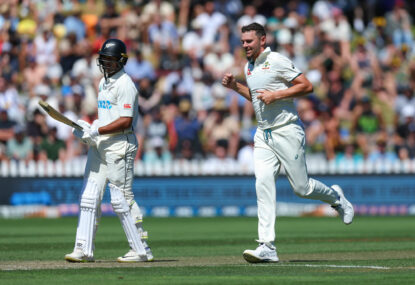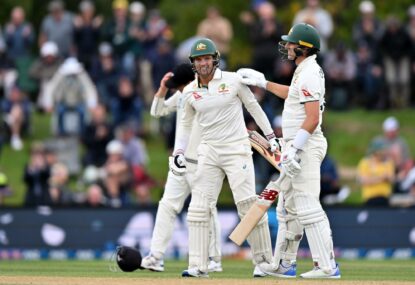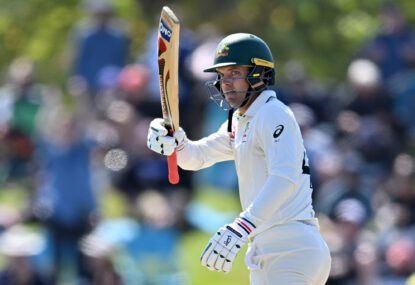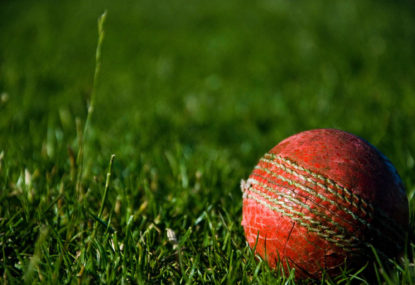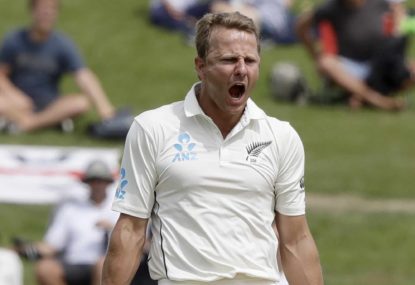After New Zealand made history by winning the series in England in 1986, Graham Gooch, the England opener, described the Kiwi bowling as, “It was Richard Hadlee at one end, Ilford seconds at the other.”
This comment can be applied to the New Zealand attack throughout the decade. Gooch’s Ilford second would include the likes of Ewen Chatfield, Lance Cairns, Martin Snedden and a few others.
None of these bowlers can have any claim to greatness, but they played their part in the era of success in Kiwi cricket. I will start with a bowler I never enjoyed watching in action in the bowling crease.
Ewen Chatfield
Nothing about him seemed suitable for a pace bowler to me – his run-up to the wicket, his bowling action, his appealing – nothing. Even his moustache irritated me, it was no match for (Dennis) Lillee’s or Clive Rice’s. Yet, for more than a decade he remained a most loyal servant of Kiwi cricket.
He had a memorable Test debut against England in early 1975, but it was memorable for only the wrong reasons. Not only did the home side suffer an innings defeat, Chatfield very nearly lost his life following a head injury while batting in the second innings. He returned to Test cricket a couple of years later, but it was only in 1983 that he really established himself in the Kiwi team.
He was never the most penetrative bowler in the world; he only had three five-wicket hauls in his Test career. He was mostly a three or four wicket guy. His nagging accuracy plus his ability to get a little bit of movement in the air, made him a perfect foil for Hadlee. And I believe he benefitted greatly from bowling in tandem with Hadlee.
His first five-for came during a famous occasion. After Lance Cairns’ seven wickets on the opening day, the Kiwi batters batted sensibly to gain a sizeable first-innings lead. Any hopes of an England revival were dashed on the third afternoon by Chatfield, who dismissed both the England openers cheaply. Both Graeme Fowler and Chris Tavare had scored tons in the first Test at the oval.
Chatfield finished with 5-95 as New Zealand recorded their first-ever Test success in England.
NZ humiliated England at Christchurch in Feb. 1984, and Chatfield again impressed taking 3-10 and 1-14 in the match His best bowling efforts 4-51 and 6-73 came in a drawn match at Port of Spain in March 1985. This effort seems even more impressive if we consider the fact that the Queen’s Park Oval wicket is generally considered more suitable for the spinners than the pace bowlers.
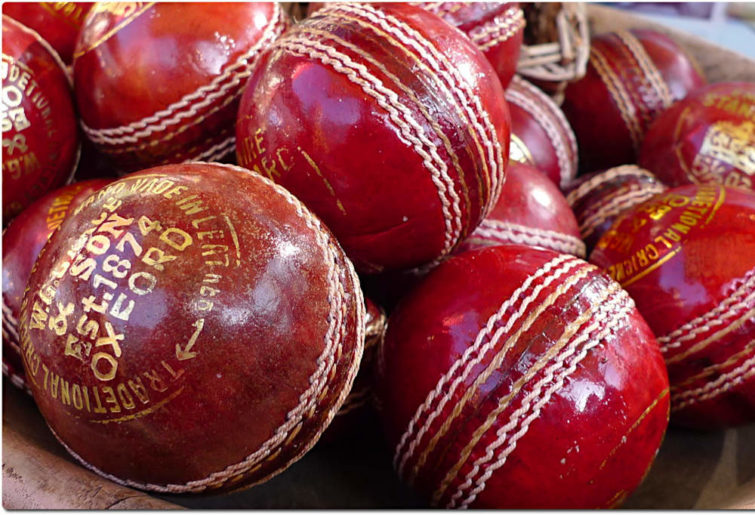
(Credit: Swamibu/CC BY-NC 2.0)
At Christchurch on March 1987, Hadlee (6-50) and Chatfield (4-30) restricted WI to 100 all out on the opening day after skipper Jeremy Coney, in his final test, had put the opposition in. The mighty Windies were defeated within three days, the first time they had experienced such humiliation in 22 years.
A year later, during the home series against England his role changed. With Hadlee missing the series, he had to lead the attack sharing the new ball with young Danny Morrison. He excelled in the rain-affected drawn series, taking 13 wickets at 15.23 average. Chatfield ended his Test career in 1989.
Now, a few words about his batting. In 43 matches and in 54 innings he managed a grand total of 180 runs in Test cricket. It has taken Devon Conway just one innings to get past Chatfield in NZ’s all-time Test run-scorers list.
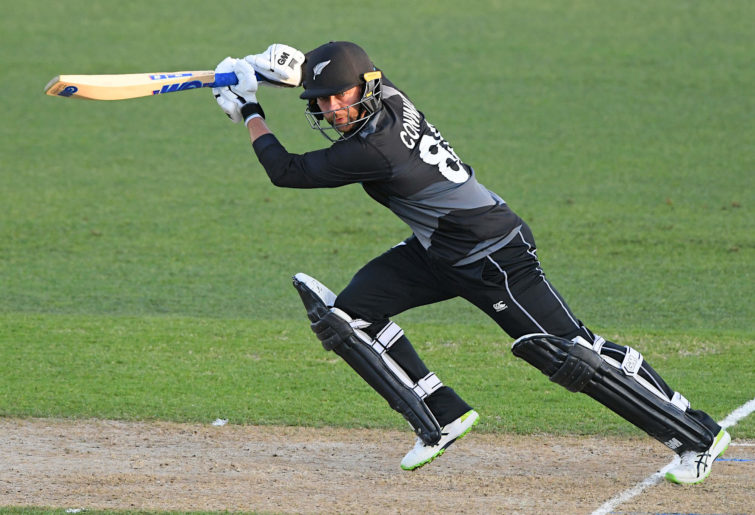
Devon Conway. (Photo by Kerry Marshall/Getty Images)
But remarkably, while his best bowling efforts failed to lead the Kiwis to victory, his most impressive batting effort (21*) led to a famous Kiwi victory over Pakistan (this was discussed in detail in the first part). His heroics against a hostile Wasim Akram have found their rightful place in New Zealand cricket folklore.
Lance Cairns
A bowler with an unorthodox bowling action and a batter with an unorthodox technique, Cairns (Sr.) was still a great crowd puller.
As a bowler, late inswingers were his main weapon, and he got this weapon working perfectly in the hot and humid conditions of Madras to record his first five-wicket haul, 5-55 in December 1976. He certainly enjoyed bowling against India. At Wellington in February 1981 in extremely bowling friendly conditions both Richard Hadlee and Kapil Dev experimented a bit too much. Cairns, on the other hand, just kept things simple. He let the pitch do the rest, and his 5 for 33 combined with a Geoff Howarth hundred led to a comfortable Kiwi victory.
His most famous bowling effort came at Headingley, on 28th July 1983. Geoff Howarth’s decision to put the opposition in seemed to backfire as England reached 2-135 in midafternoon. It was Cairns’ dismissal of Allan Lamb that led to a middle-order collapse. Cairns was the main destroyer and with Coney removing a typically obdurate Chris Tavare, England was bowled out for 225 on the opening day. Cairns was adjudged the MOM for his bowling figures of 7-74 and 3-70.
Cairns ended his career on a winning note at WACA in 1985. But his contribution in the series-winning victory was minimal. He bowled 40 wicket-less overs and scored a duck in his only innings.
I immensely enjoyed his batting, especially in ODI cricket. I found a Caribbean flavour in his batting approach, and while he didn’t have the elegance of Viv Richards, the power was always there. His ODI strike rate of 105 is phenomenal for those days’ standards. Occasionally he was promoted in the batting order to give the run rate a boost. In the famous victory over England at the Adelaide Oval, in January 1983 he smashed 49 from 24 balls coming at the No.5 position.
John Bracewell
Coming from one of NZ’s most successful cricketing family, Bracewell, like many other of his Kiwi teammates, got better with time. His strike rate of 82 with the ball was highly acceptable in the 1980s, when most of the spin bowlers in the world were on the defensive. It certainly was way better than John Emburey’s SR of 104.
He was the MOM for a losing cause at SCG in 1985. He scored an unbeaten 83 in the Kiwi first innings, in the process sharing a 124 run stand with No. 11 Steven Boock. With the Cherry, he took 2-51 and 3-91. Aus needed 260 runs in the fourth innings, but Boock and Vaughan Brown failed to support Bracewell properly.
But disappointment turned into joy, when later in the season at Auckland he took 4-74 and 6-32 against Aus. The hosts won by eight wickets despite conceding a first-innings lead. Then the Kiwis won at Trent Bridge in the northern summer. Again Bracewell was a key performer. He scored his only Test ton here. Replying to home side’s first innings score of 256, the Kiwi top order struggled reaching 5-144. But, then the all-rounders Bracewell (110), Hadlee (68) and Evan Gray (50) ensured a match-winning lead for the tourists. Pumped up by his batting success, Bracewell took 3 for 29 in the England second innings.

(Steven Paston – EMPICS/Getty Images)
Bracewell ended his Test career in 1990, although his form was still pretty good. At Wellington, his 6-85 helped the Kiwis beat their trans-Tasman rivals. And then at Edgebaston, Hadlee and Bracewell, both playing their final test, restricted England to just 158 all out in the second innings. Needing 345 for victory New Zealand finished the fourth day at 2-101. But then their batting collapsed against Devon Malcolm and Chris Lewis on the final day.
Ian Smith (Wk)
Throughout the 1980s, Smith was the undisputed number one keeper for NZ. Behind the stumps, his work was neat and tidy and his batting improved with time and along with the all-rounders he often made vital contributions down the order. His batting average of 25.56 is highly acceptable for those days’ standards.
At Christchurch in 1982, he bagged a pair in the defeat against Australia. Yet, in less than two years he scored his first Test hundred (113*) at Auckland against Bob Willis’ England.
He certainly enjoyed batting at the Eden Park, because six years later he produced a remarkable batting display there against the Indians. India, needing to win the Test to level the series had made a promising start. Their seamers had restricted the opposition side to 7-131.
But then the Hadlee-Smith duo started the Kiwi recovery. Hadlee scored 87 from 108 balls batting in his usual aggressive manner. But, on this day he was overshadowed by Smith. He launched an Adam Gilchrist-like assault on the Indian bowling and the opponents were not ready for it. His 173* came from just 136 deliveries (23 x 4, 3 x 6) as New Zealand scored almost 400 runs on the opening day.
Smith’s 173* is still the highest Test score for a number 9. Stuart Broad came close, but not close enough at Lord’s in 2010. Smith also shares the catches record in an innings (7) with three other keepers. He achieved that feat in a seamer-friendly pitch at Hamilton in 1991, against SL. Asanka Gurusinha scored tons in each innings for SL, but still Smith was adjudged the MOM for his excellent keeping. In the next Test at his favourite ground in Auckland, Smtih captained the Kiwi side in the absence of Martin Crowe and the match ended in a high-scoring draw.
Quite appropriately, his international career ended at Eden Park in the WC SF loss against Pakistan.
































































































